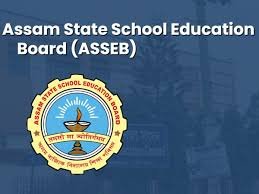The Assam State School Education Board (ASSEB), previously known as the Board of Secondary Education Assam (SEBA), released the HSLC Class 10 results on April 11 at 10:30 am. Students, parents, and teachers awaited the outcome with anticipation, only to be met with a sobering statistic. The overall pass percentage has dipped to 63.98 percent, a noticeable decline from last year’s performance. The results reflect academic challenges faced by a large section of students and have prompted discussions on the quality and reach of school education in Assam.
Education Minister Ranoj Pegu addressed the public soon after the results were announced. He expressed concern over the lower pass rate and stated that the government will take urgent steps to analyse the causes behind this trend. He stressed that while the board followed strict evaluation norms to ensure fairness, the performance gap highlighted a need for deeper systemic interventions. He said the department will identify areas where schools, teachers, and students need more support, especially in rural and underserved regions.
According to official data released by ASSEB, over 4.2 lakh students appeared for the examination this year. Among them, more than 1.5 lakh students could not secure the minimum qualifying marks, raising serious questions about classroom engagement, teaching standards, and examination preparedness. Guwahati and Jorhat emerged as top-performing districts again, but several districts in Lower Assam and interior areas of Upper Assam registered very poor pass rates.
Teachers and academic experts believe that many students continue to face learning gaps that emerged during the pandemic. They said that despite reopening of schools, not all students regained academic momentum. In many districts, schools continue to operate with limited resources and teacher shortages, which have compounded the learning crisis. The drop in performance reflects the reality that a significant number of students lack access to quality remedial teaching or adequate mentorship at school and home.
The board has also noted that subjects like Mathematics and General Science saw higher failure rates this year. Officials admitted that these subjects have traditionally posed challenges, but the current figures suggest a worrying increase in failure rates in these two areas. Teachers claim that large syllabi, a lack of conceptual clarity, and poor foundational learning in earlier classes contribute to these poor performances. Students from tea garden communities, Scheduled Caste backgrounds, and remote villages have been hit the hardest, with many of them unable to access coaching or extra academic help.
ASSEB has announced that it will soon issue individual mark sheets and digital certificates through its online portal and designated schools. The board has also clarified that the compartmental exams for failed students will be conducted in July, giving them a chance to improve their scores and move forward in their academic journey. Officials urged students not to lose heart and to utilise this opportunity to bridge their learning gaps.
Parents’ associations and student unions have responded with mixed reactions. While some praised the transparency in evaluation, others questioned whether the government did enough to prepare students for the exam. Many parents expressed frustration with online learning tools introduced during COVID, saying their children never received proper classroom teaching in the last three years. They urged the government to invest more in school infrastructure, appoint qualified teachers, and provide targeted support to weaker students.
As Assam prepares for new academic sessions, the focus will now shift to corrective measures. The Education Department has already started formulating plans to introduce special remedial classes during summer vacations. They also plan to hold teacher training workshops aimed at improving pedagogical methods in Mathematics and Science.
With the announcement of these results, the state stands at a critical juncture in its education journey. The data has exposed deep-rooted challenges that cannot be addressed with superficial measures. As stakeholders reflect on the numbers, the need for equitable, inclusive, and sustained academic support becomes more urgent than ever.




